Often the SLR's and DSLR's have built-in flashes. For in the room are often enough The Leitzahl the built-in flashes is usually around the 10. Will man it better illuminate one comes around a Zusatzblitz not around it.
Unfortunately, the old flashguns (analogue ages) no longer fit 100% to the new DSLRs. And vice versa, it is not.
From the analog time I have 2 Nikonblitze for the Nikon SLR Cameras F-401x, F-801s, F90 and F100.
1. Nikon SB-24 (guide number 36 iso 100 / m)

2. Nikon SB-28 (guide number 36 iso100 / m)
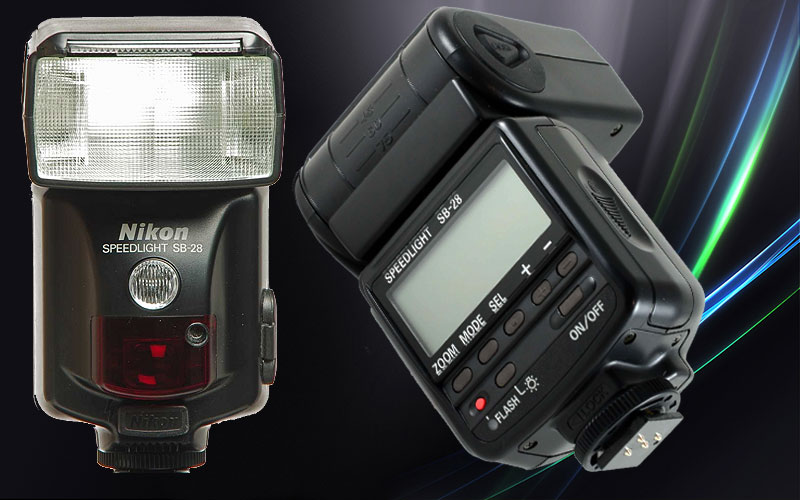
Technical data SB28:
flash control
TTL
Focal length positions 24-85 mm (automatic electric)
Flash head rotating and swiveling: left 180 °, right 90 °
tiltable: above 90 °, below 7 °
power supply
4 x Mignon (AA)
Focal length / GN
Guide number 42 at 50 mm focal length (ISO 100)
Status display LCD
Master function no
Slave function yes (not with pre-flash)
Second reflector available no
Modeling light flashes no
Wide angle lens available yes
Lightning reflector (bouncer) yes
Stroboscope function yes
High-speed synchronization yes
Splash protection no
LED continuous light no
Flash Connectors F-connector, Nikon system cable
Now you ask yourself why the idiot has almost 2 identical flashes. I once gave the SB-24 to a friend. I did not need it for some time and did not remember who I lent it to. We had no lightning when I needed it. Then I bought the SB-28. Later I got the flash back. The functions of the two sytemblitze are almost identical. Both have the same guide number. However, the SB-28 has a higher flash rate. And Nikon has learned the label of the rubber buttons went off with the SB-24 over time. The label on the SB-28 is above it.
From the digital era the Nikon SB800 for the F100, D70s, D300 and D300s D500 from my cameras it works with all digital Nikon cameras.
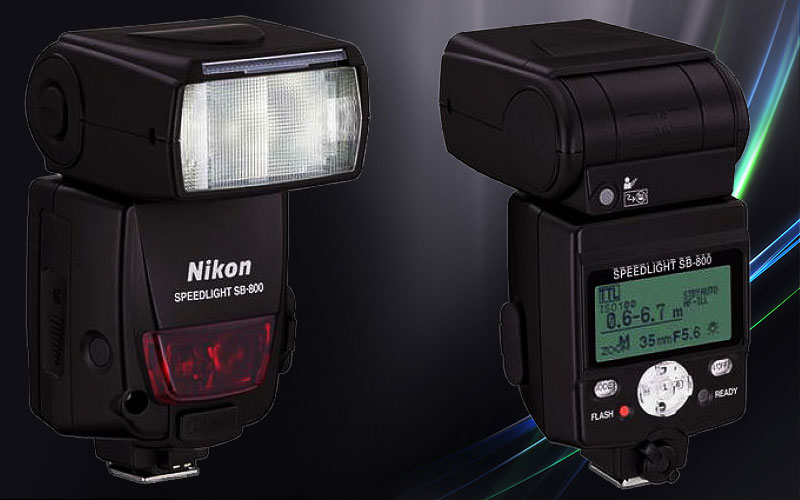
Specifications SB800:
flash control
i-TTL
Focal length positions 24-105 mm (automatic)
Flash head rotating and swiveling: left 180 °, right 90 °
tiltable: above 90 °, below 0 °
power supply
4 x Mignon (AA)
Focal length / GN
Guide number 38 at 35 mm focal length (ISO 100)
Guide number 53 at 105 mm focal length (ISO 100)
Flash exposure correction from -3 to +3 EV
Status display LCD
Master function yes
Slave function yes (not with pre-flash)
Second reflector available no
Modeling light flashes no
Wide angle lens available yes
Lightning reflector (bouncer) yes
Stroboscope function yes
High-speed synchronization yes
TTL Unleashed yes
Splash protection no
LED continuous light no
Flash Connectors Nikon system cable
Weight without batteries 350 g
Metz 58 AF1 digital (for Nikon) all digital cameras from Nikon.
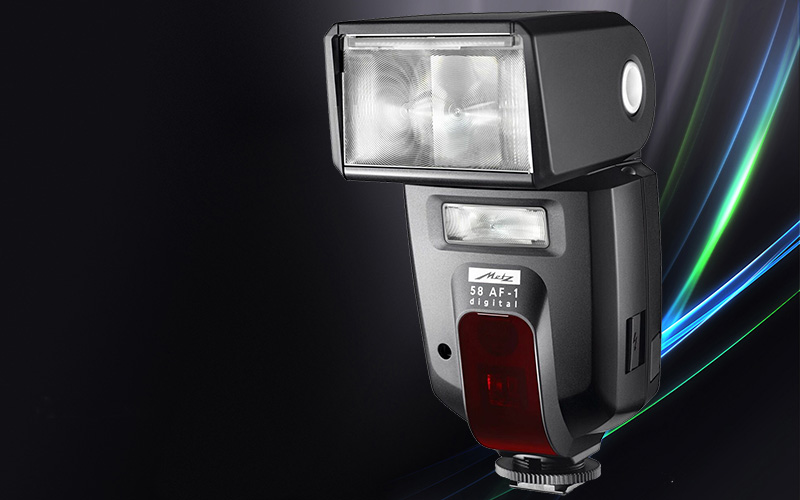
I bought the flash for my wife used because the internal flash of her Nikon D200 was a bit weak for large spaces. I can not say much about the flash.
Metz 64 AF1 digital (for Nikon) works with all digital cameras from Nikon.
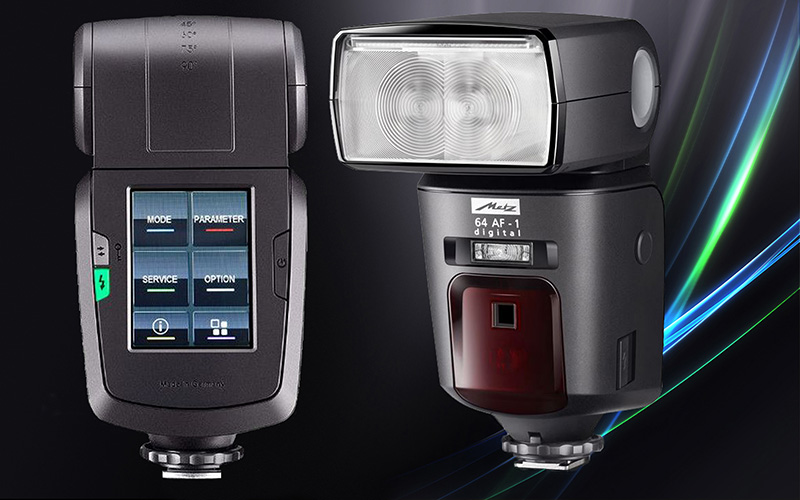
Technical data Metz AF1 digital
Maximum guide number at ISO 100; Zoom 200 mm:
In the meter system: 64
In the Feet system: 210
Flash Modes:
i TTL, i TTL BL, i TTL FP flash mode, Manual flash mode with
Distance presetting, automatic flash mode,
Stroboscopic flash mode, matrix-controlled TTL fill-in flash,
Manual M, remote slave flash mode, servo flash mode.
Automatic iris adjustment at ISO 100/21 °:
F1.4 to F64 including intermediate values
Manual partial light outputs:
P1 / 1 to P1 / 256
P1 / 1 to P1 / 256 for high-speed synchronization HSS
Flash times see table 2 (page 327)
Color temperature: approx. 5600K
Photosensitivity: ISO 6 to ISO 51200
Synchronization:
Low-voltage IGBT ignition
Flash number at full light output
• 140 with alkaline manganese battery (1.5V)
• 190 with NiMH batteries (1.2V / 2100 mAh)
• 290 with lithium batteries (1.5V)
• 360 with external power supply with Metz Power Pack P76
Flash time in seconds (min./max.)
• 0.1 / 4.4 with alkaline manganese battery (1.5V)
• 0.1 / 1.8 with NiMH batteries (1.2V / 2100 mAh)
• 0.1 / 4.2 with lithium batteries (1.5V)
• 0.1 / 1.6 with external power supply with Metz Power Pack P76
Illumination of the motorized zoom reflector:
From 24 mm (35 mm format 24 x 36)
From 12 mm with integrated wide-angle diffuser
(Small picture format 24 x 36).
Swivel ranges and detent positions of the reflector head:
Vertical:
-9 ° 45 ° 60 ° 75 ° 90 °
Horizontal counterclockwise:
60 ° 90 ° 120 ° 150 ° 180 °
Horizontal clockwise:
60 ° 90 ° 120 °
Dimensions in mm (W x H x D):
Approximately 78 x 148 x 112 cm
Mass:
Speedlight without power sources: approx. 422 g
Deliverables:
Flash unit with integrated wide-angle lens and
Reflector card, pedestal S60, bag T64, instruction manual.
flash Accessories
Metz WT-1 (wireless trigger)
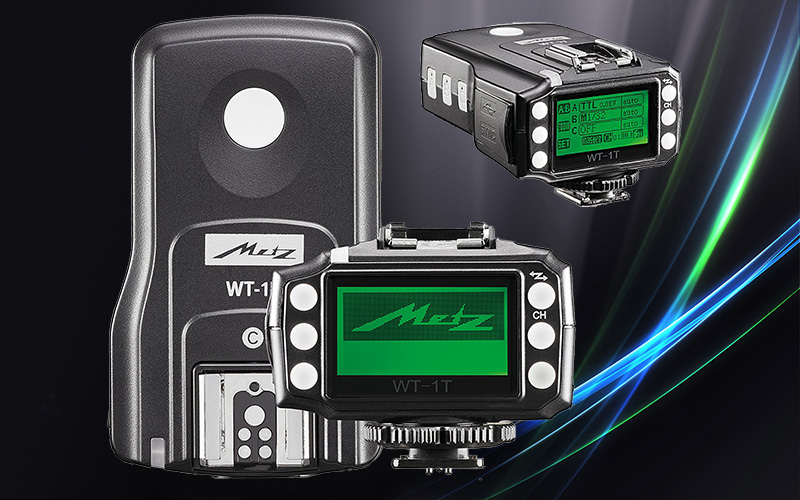
I have deliberately positioned the Metz WT-1 Trigger System at this point.
The Metz WT1 wireless flash system is ideal for unleashed flashing. Whether I'm doing a model shoot around highlights e.g. in the hair from behind or want to illuminate the model from the side. Even high-speed flashing is super possible. But also the classic situation such as at a garden party where the action takes place inside and outside. If I now stand in the room with the door and the window or hold a large glass door, I would not be able to depict what is outside cleverly. In order to achieve this, e.g. outside of the room there is a second flash on the terrace which I have to control somehow Of course, that would probably be possible with a 10m lightning cable. But at a party, who pays attention to a cable that is on the floor and as the devil wants it, someone stumbles over it and tears tripod and flash. Then the flash is most likely broken.
The Metz WT1 is wireless and has a long range of 300m, which is several times more than a soccer field, but above all you don't need any cables.
All connected flashes can be configured via the transmitter, you do not have to run to the individual flashes and set them separately. It works with all flashes that support the respective camera brand that you use. The system can be updated via USB when new camera models from the camera manufacturer come onto the market.
One set, one transmitter and one receiver, is available in the set for around 180 euros. You can also buy 2 sets because the transmitter can also be used as a receiver, but there are also individual receivers to buy. The price is around 70 euros.
I think it's a successful thing, and not just because of the things described here.
Explicitly when you are on the move, the system in combination with system flashes can replace a large and heavy studio flash system. The system can also be attached to a tripod and there are also light shapers such as soft boxes etc. for system flashes. Now think about it and take a look around in the photo world. cheap light shapers. These can be used with the system flashes. That will certainly not quite achieve the quality of the studio flashes, but it has other advantages. You are independent of 230 V electricity, so the whole story is e.g. easy to use everywhere, furthermore, it is not all that big and as heavy as the studio flashes, making it very easy to transport. That makes the whole equipment very mobile.
With the system you basically have a small, very mobile studio and that regardless of 230V.
Good equipment for indoor and outdoor.
A well-made video to explain the system can be found here. (German)
For the Canon AE-1 program the Canon Speedlite 199A
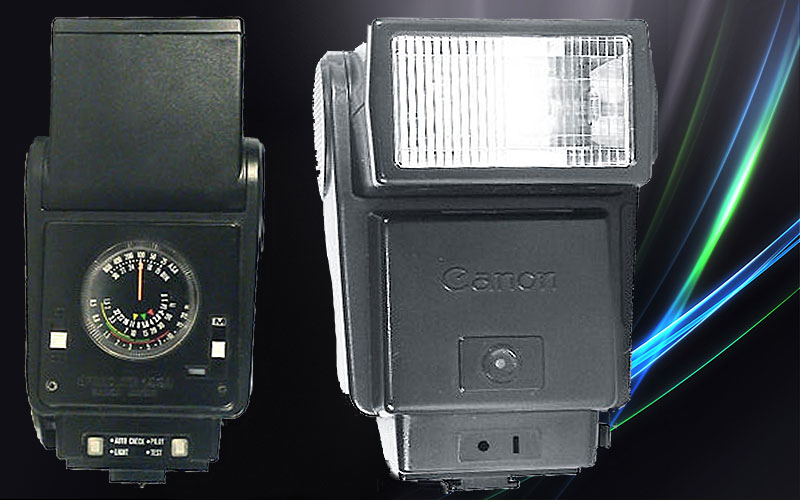
Technical Specification:
Leitzahl 34
-25-800 ASA
-4 pol.Systemblitzschuh
-3 Automatikprogramme
-1 Programm manuell
Type: High-powered shoe-mount flash; automatic, thyristor type
Guide Number: 98 (ISO 100, feet), 60 w/wide adaptor
Recycling Time: 10 seconds with Alkaline-Manganese batteries 6 seconds w/Ni-Cd batteries
Number of Flashes: 100- 1000 w/Alkaline-Manganese batteries 50-500 w/Ni-Cd batteries
Auto Flash Ranges: 3
Auto Apertures: (ISO 100) Red-f/2.8 Green-f/5.6 Yellow-f/11
Bounce:Yes
Flash Coverage: For 35 mm format, covers angle of view of 35 mm lens; covers 24 mm w/adaptor
Color Temperature: Daylight
Power Source: 4 "AA (Mignon) size Alkaline or Ni-Cd batteries
Dimensions: 3-1/8 x 3-1/4 x 4-1/2 in.
Weight: 1 lb., 1-5/16 oz.
Studio flashes:
Since I have operated a homegreater for a long time, I have from the time still three Walimex VC300 per studio flash incl. Various light former.
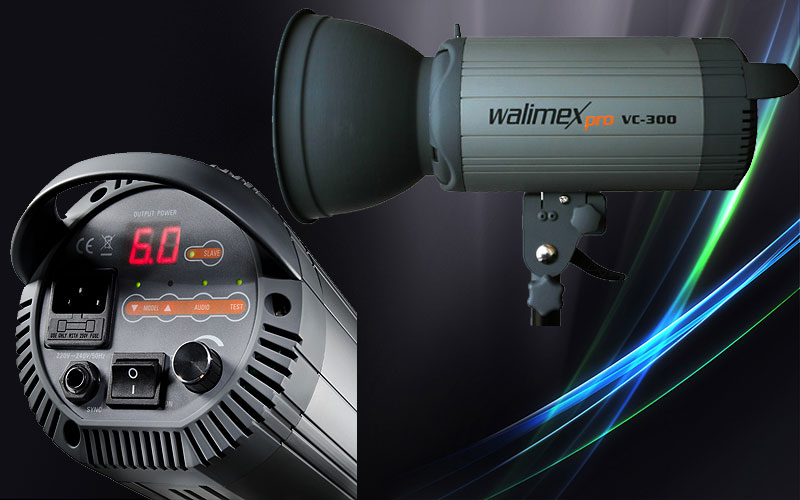
Technical data Walimex pro VC-300:
Battery No
Connection Tripod head on tripod Spigot
Trigger Type Photocell, synchro cable, test button
Trip voltage 5V
Automatic discharge Yes
Special features Umbrella holder
Flash duration 1/800 ~ 1 / 1200s
Flash power 300Ws
Flash tube plug-in
Width 130mm
Modeling light 150W
Color temperature 5600 ± 200K
Microfuse 6.3A
Radio receiver No
Height 130mm
HSS 1/300
Cooling Yes
Length 300mm
Power levels 1/1 - 1/32
Guide number 60 (2m / ISO 100)
Product color black, gray
Radio Sync & Control no
Protective glass no
Slave Yes
Power supply AC 200-240V / 50Hz
TTL transmission no
Transmission radio, cable
Recharge time (s) 0.2 ~ 0.9s
A few words about the Walimex flash heads:
Among the photo freaks, the flashes do not have a good reputation, they are often laughed at a little. There are other well-known manufacturers that are preferred in the circles. I have deliberately bought the Walimex because the flashes with the same power from these well-known manufacturers who then called there have cost almost twice as much.
In all situations I have been given the Walimex flashes and I have not had a bad experience with them.
My home studio was about 4m x 5m in size. First I flirted with the 1000s flash heads. In retrospect, I'm glad to have bought this nich. When the dimensions of the room were the three 300s lightning almost too strong I had to downright rules. Even a flash head was sufficient, but it always depends on the light setting.
The care of flash units:
Basically, the flash units do not need much attention. If you do not use them for a longer time you should remove the batteries.
If you use a flash only sporadically you should once a month fresh batteries / batteries insert, they min. Leave on for 10 minutes and flash several times. This keeps the capacitors fresh.
Did not do that and then does it, you can clearly see that the charging time of the capacitors until the flash readiness of the flash is getting shorter and shorter.
As always is synonymous with the flashes still is one on my wish list and that is the Metz mecablitz 76 MZ-5 digital. This flash is no longer manufactured and is only to get used.

This flash is an absolute professional flash. He used to be seen by reporters many times. He is screwed by means of a rail under the camera. As an accessory, there was a large external battery pack. He is one of the strongest portable system flashes.
But with the flash there are a few peculiarities that you have to attention to.
- for the newer cameras it must necessarily be the digital version so Metz 76 MZ-5 digital.
- because the flash is older you have to expect that the batteries are tired. New you get easily offered for about 80 euros.
- These flashes are often offered for various camera manufacturers. That they are only suitable for this camera manufacturer is nonsense. The flash can only be used by a flash adapter for a particular camera so you have to pay attention that you also buy the right adapter or that he will be bought. The flash can be quietly offered for Canon with a Nikon flash adapter, it then works synonymous to Nikon cameras.
- There are several adapters for both Nikon and Canon. If the adapter version is too old, it is not synonymous. In my case, I need the Metz Sca 3402 M10 adapter. But again the problem that they are no longer produced. Which adapter is necessary for which camera model can be found on the Metz website.


